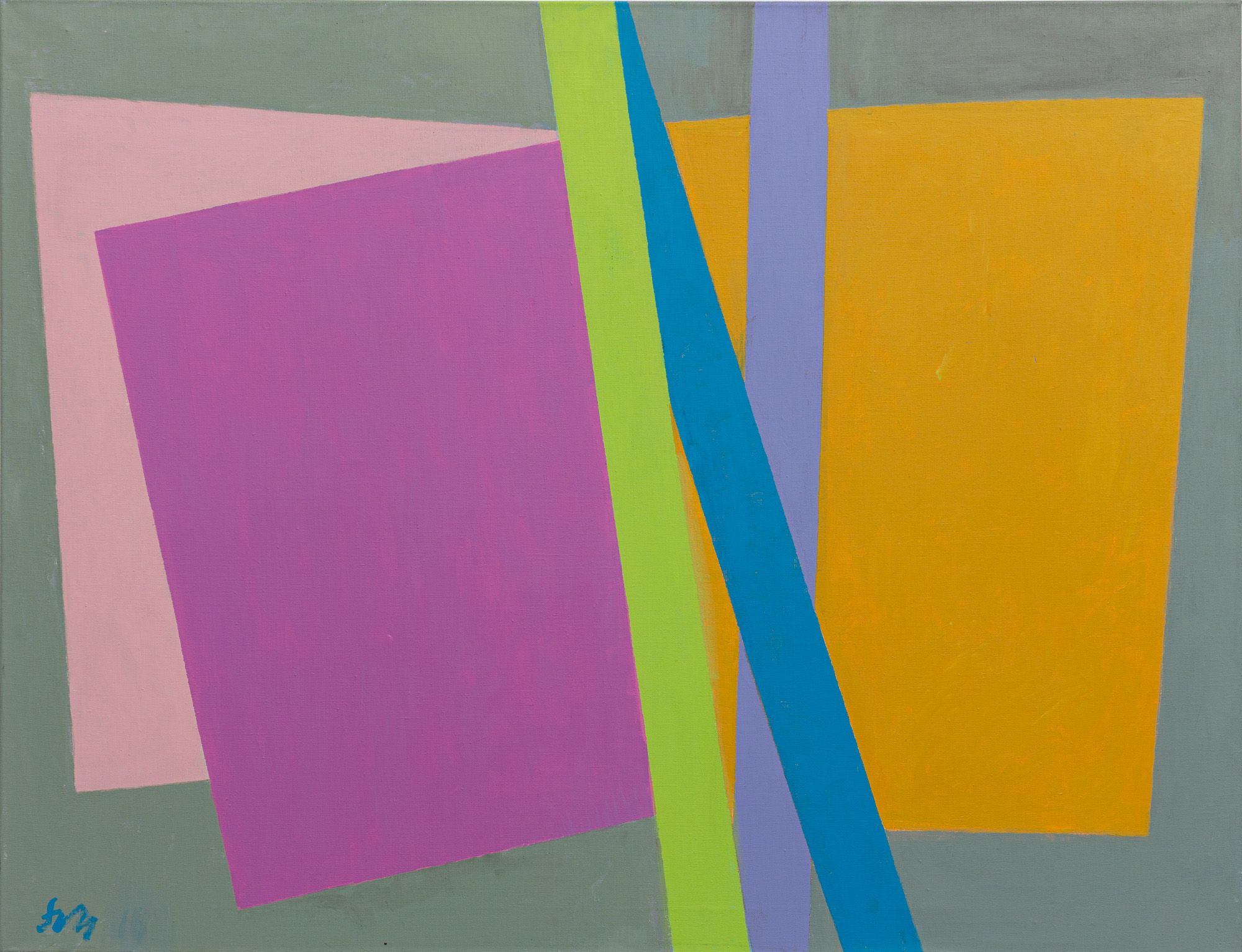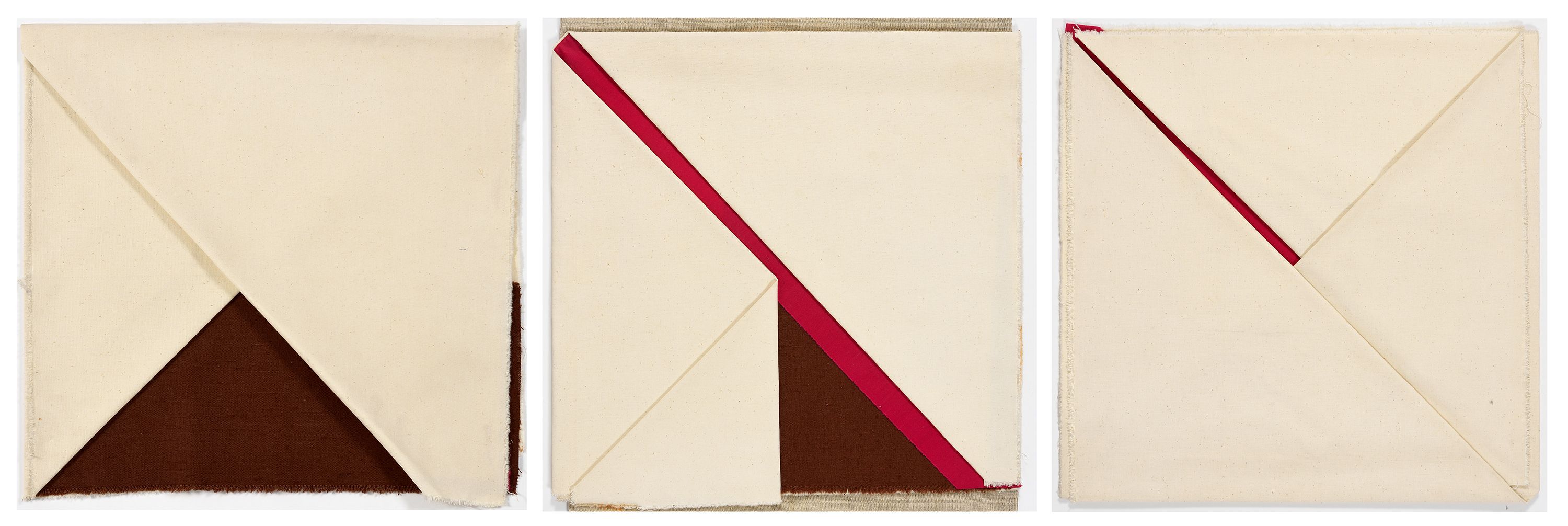Margit Szilvitzky
Paintings 1989-2015
| Venue: | acb Gallery |
| Date: | May 09 – Jun 20, 2025 |
| Opening: | May 08, 2025, 18:00–21:00 |
Description
Margit Szilvitzky (1931–2018) is still widely recognized as a pioneer of Hungarian experimental textile and fiber art, while her painting practice—an important part of her oeuvre—has received significantly less attention in recent decades. After her 1988 retrospective exhibition at Kunsthalle Budapest, Szilvitzky concluded and closed her spatially expanded textile-, and fiber-based art and began systematically exploring dimensions of painting that interested her. She reflects on this transitional period in her 2007 book entitled Continuous Present: "After the palpable success and euphoria of the Kunsthalle exhibition (...) I suddenly found myself in the 'no man's land' of art. Textile art slowly withdrew from behind me, and my peers were no longer heading in the same direction. When I looked around for fellow artists with similar goals, I had to realize that I didn’t truly belong anywhere. And belonging matters everywhere, including the Hungarian art scene. Institutions that organize and support exhibitions, and even most artists, still think in terms of genres. With my painted and sewn canvases, I couldn't really define myself as a painter—I was left alone, and found no helping hand anywhere.”
The 2022 exhibition Cardboard Box Images, held at acb Attachment, already sought to reintroduce a more complex understanding of Margit Szilvitzky’s art into public consciousness. Her art from the late 1980s onward could no longer be associated with a single genre; her practice was increasingly characterized by bridging media and navigating between them. Around this time, the artist began to define herself a plasticienne—a form-giving artist who simultaneously works with painting, materials, colors, space, and surfaces.
The exhibition at acb Gallery now offers a comprehensive approach to Szilvitzky’s painting oeuvre, including her shaped canvases from the late 1980s and mid-1990s, her cardboard box pictures conceived from the mid-1990s along the gesture of folding and unfolding, and her later works from the second half of the 2000s. These paintings address spatial concerns that had always preoccupied the artist, using the visual language of geometric abstraction and its exploration of flatness.
The opening work of the exhibition—also the earliest chronologically—is Aero Rouge (1989), a programmatic piece that synthesizes the painterly conclusions of her Aero collage series, created immediately after the Kunsthalle retrospective. Alongside the monumental Pink Painting (1994), Aero Rouge is among Szilvitzky’s shaped canvases, with which she attempted to articulate spatiality in a new way. Her cardboard box pictures from the mid-1990s approached the artistic rendering of space in yet another manner. Szilvitzky writes about the experience of creating these works: "An interesting moment occurred when I once again saw the geometric structure and the traces of the third dimension being flattened, in an unfolded cardboard box. Later I noticed that the paint applied with a roller created an extra layer on the surface of the corrugated cardboard; the tiny, vibrating shifts that teased the eye almost evoked spatial emotions. I played on this minimal yet perceptible relief-like situation, which was amplified by the shadows of the box’s edges, the shapes of the gaps and cut-outs—and suddenly, a spatial association of front and back was born, a new kind of spatial conception. This time, however, it emerged differently, from the traces of pigment layers, and this became a major inspiration for me going forward.”
After the shaped paintings and cardboard box images, Szilvitzky arrived at painting’s most timeless questions: the investigation of spatiality in geometric abstract art. The exhibition presents numerous wonderfull examples of this from the 2000s and 2010s. As she states in Continuous Present: "A personally expressive mode of communication is not really characteristic of me. What I appreciate in images is their object-like quality (…) I have always been drawn to works that rely on internal proportions, relations, and visual sign systems, thereby shaping their own visual language. It is from the particular structure and linguistic combination of the image that the tension is created—one that, in a fortunate case, resonates with the viewer.”
Paintings 1989–2015 is Margit Szilvitzky’s third solo exhibition at acb Gallery since 2021. The gallery presented her textile works from the late 1960s and 1970s at the Frieze Masters art fair in London in 2022. In recent years, Szilvitzky’s textile art has entered the collections of prestigious institutions such as Tate Modern in London. Her monumental 1979 textile installation Spacecube, along with several of her works on paper, is now part of the Hungarian National Gallery–Museum of Fine Arts’ contemporary collections. In the same year, her piece Dalmatica was acquired by the Pannonhalma Archabbey Museum. In 2021, acb Research Lab published the book Margit Szilvitzky – Finding the Square – Works 1968–1988.Az űrlap teteje

